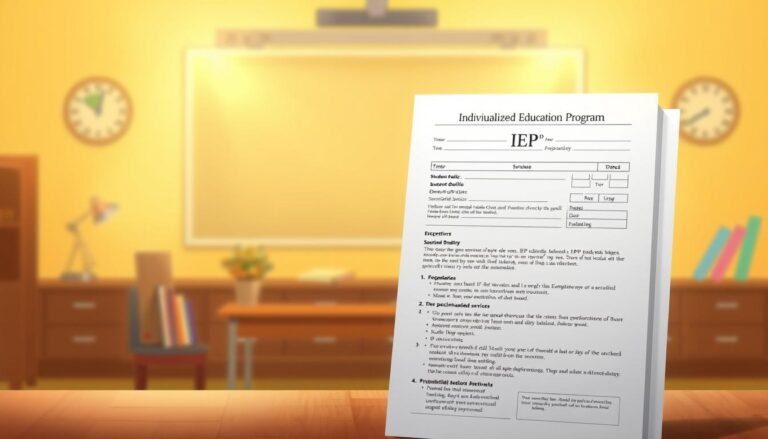Empowering Multilingualism: The Impact of Learning Disabilities on Language Acquisition
Introduction: Breaking Barriers through Understanding
In our increasingly interconnected world, multilingualism is not just a desirable skill but a cornerstone of effective communication and cultural exchange. However, the journey towards mastering multiple languages can be riddled with challenges, particularly for those facing learning disabilities. The focus of this article is to explore the profound relationship encapsulated in Empowering Multilingualism: The Impact of Learning Disabilities on Language Acquisition. Through an examination of case studies, scientific research, and firsthand experiences, we will shed light on how learning disabilities can influence the multilingual learning landscape and provide strategies to empower individuals on this journey.
Understanding the Basics: Learning Disabilities and Language Acquisition
What Are Learning Disabilities?
Learning disabilities (LD) refer to a range of disorders that affect the brain’s ability to receive, process, and respond to information. These can manifest in various forms, including dyslexia, dyscalculia, and auditory processing disorders, among others. Each condition has its unique set of challenges that can influence language acquisition and overall learning.
The Connection Between Language Acquisition and Learning Disabilities
Research suggests that language acquisition is a complex process influenced by cognitive, social, and emotional factors. For those with learning disabilities, challenges in basic literacy skills, auditory processing, and memory can complicate this process. Understanding Empowering Multilingualism: The Impact of Learning Disabilities on Language Acquisition requires delving into how these challenges intersect with the multilingual learning experience.
The Impact of Learning Disabilities on Language Acquisition
Cognitive Implications
Individuals with learning disabilities often exhibit difficulties in key cognitive processes that are essential for language learning, such as:
Phonemic Awareness: The ability to hear, identify, and manipulate sounds in spoken language is crucial for developing reading and writing skills. Children with dyslexia, for instance, may struggle with phonemic awareness, affecting their ability to learn new languages.
- Memory: Short-term and long-term memory plays a vital role in language acquisition. Individuals with memory-related learning disabilities may find it difficult to retain vocabulary, grammar rules, and conjugation patterns, thus hampering their ability to become proficient in multiple languages.
Emotional and Social Considerations
Alongside cognitive challenges, emotional and social factors also play significant roles. Children struggling with learning disabilities may face negative self-esteem and anxiety, causing reluctance to participate in multilingual learning environments. Addressing these issues is crucial for empowering multilingualism in those with learning disabilities.
Real-world Applications: Case Studies
Case Study 1: Maria’s Multilingual Journey
Background: Maria, a 10-year-old girl with dyslexia, participated in a bilingual education program that aimed to teach Spanish and English.
Observations: Initially, Maria found it challenging to grasp basic phonetic sounds in both languages. However, through targeted interventions focusing on multisensory learning techniques—such as using visual aids, music, and hands-on activities—Maria began to make significant progress.
Analysis: This case highlights how empowering multilingualism can occur through tailored educational strategies designed to address the specific needs of learners with disabilities. Such targeted support not only fosters language acquisition but also builds confidence and motivation.
Case Study 2: Ahmed’s Classroom Experience
Background: Ahmed is a 12-year-old boy with a learning disability who immigrated to the United States from Iraq. His primary language is Arabic, and he struggled with English due to his auditory processing challenges.
Observations: In a supportive classroom environment that embraced his native language while systematically introducing English, Ahmed thrived. The use of bilingual books and peer-assisted learning provided him with additional support.
Analysis: Ahmed’s experience underscores the importance of creating inclusive learning environments that embrace multilingualism. Empowering students like Ahmed can lead to enhanced language acquisition and greater self-efficacy.
Strategies for Empowerment and Success
Creating Inclusive Learning Environments
Educational institutions need to adopt inclusive practices that recognize the unique challenges faced by multilingual learners with disabilities. Here are actionable strategies:
- Multisensory Approaches: Employ teaching methods that engage multiple senses (visual, auditory, kinesthetic) to cater to diverse learning styles.
- Peer Support: Foster collaborative learning through peer mentoring, allowing those with more language experience to assist fellow students.
- Flexible Curriculum: Develop a curriculum that is adaptable to the varying needs and paces of learners with disabilities, such as offering differentiated instruction.
Leveraging Technology
In today’s digital age, technology can play a pivotal role in language acquisition for those with learning disabilities:
- Adaptive Learning Tools: Use software and apps that adjust to an individual’s learning pace, providing personalized feedback and support.
- Speech Recognition and Text-to-Speech: These tools can help bridge the gap between spoken and written language, aiding comprehension and language practice.
Engaging Families and Communities
Families and communities play an essential role in supporting multilingualism among individuals with learning disabilities. Here are some initiatives to consider:
- Community Language Classes: Encourage family involvement in multilingual education through community language classes that welcome all language speakers.
- Awareness Campaigns: Conduct campaigns to raise awareness about the importance of multilingualism and how to support learners with disabilities at home and in community settings.
Conclusion: An Inspiring Call to Action
As we navigate the complexities of Empowering Multilingualism: The Impact of Learning Disabilities on Language Acquisition, it is essential to recognize that every learner has the potential to succeed. By understanding the challenges, employing effective strategies, and fostering inclusive environments, we can ensure that individuals with learning disabilities are empowered to unlock the doors to multiple languages.
Together, let us champion the cause of multilingual education by advocating for supportive initiatives, encouraging participation from families and communities, and employing innovative teaching methods that cater to diverse learners.
FAQs
1. What are the most common learning disabilities affecting language acquisition?
The most common include dyslexia, which impacts reading abilities; dysgraphia, affecting writing; and auditory processing disorders, which influence listening and understanding spoken language.
2. Can individuals with learning disabilities become proficient in multiple languages?
Yes! With the right support, strategies, and tools tailored to their individual needs, many individuals with learning disabilities can become proficient in multiple languages.
3. How can teachers support multilingual learners with disabilities?
Teachers can adopt multisensory learning approaches, provide flexible curriculum options, and foster peer support within the classroom to support these learners.
4. What role does technology play in supporting language acquisition?
Technology, such as adaptive learning tools, speech recognition software, and online resources, can provide personalized support, making language learning more accessible for individuals with learning disabilities.
5. How can families contribute to multilingual education at home?
Families can engage in language practice through reading bilingual books, watching foreign films, and encouraging conversations in multiple languages to enhance language skills and confidence.
With a focus on Empowering Multilingualism: The Impact of Learning Disabilities on Language Acquisition, we hope to inspire educators, families, and communities to work collaboratively towards a more inclusive and empowering multilingual landscape.
















